Karachi’s tree deficit
Shrinking green cover leaves the megacity defenseless against climate change
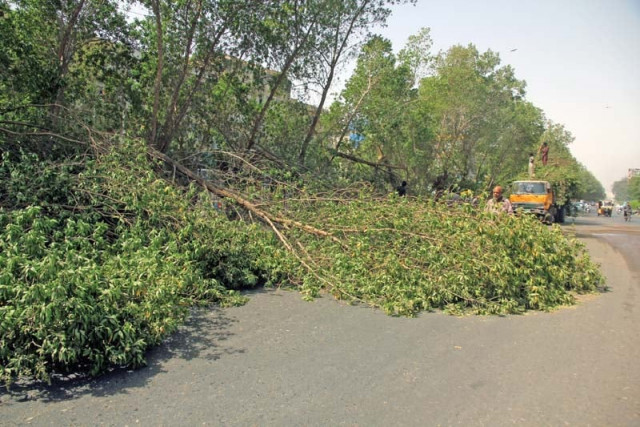
According to experts, little is done in Karachi to remedy the lack of flora and fauna, despite the urgent need. PHOTO: ATHAR KHAN/EXPRESS
Just like the absence of actual figures on how many people live in Karachi, there’s no data for how many trees are there in the city and how many more are needed. A City District Government Karachi report in 2008, using satellite images, had put Karachi’s green space among mere 7% of the total area. Muhammad Naeem Qureshi, president of National Forum for Environment and Health (NFEH), says as per the data collected by different NGOs in recent years, the cover has further reduced to 3%.
Abdullah Mushtaq, Director General for KMC’s Parks and Horticulture department, also says there is no count for how many trees are there in Karachi because the city is divided among many land-owning agencies which operate independent of each other. “Civic bodies like Karachi Metropolitan Corporation, cantonment boards and Defence Housing Authority have their own management of trees and there’s no system in place to count the total number across Karachi,” the government official says.

Mushtaq insists as far as KMC is concerned, it has planted trees on every possible space available. “There’s no room for even 10 more trees,” he claims.
Fighting global warming: ‘Tree plantation target for spring exceeded by 55m’
Listing green spaces under KMC, Mushtaq mentions Shahrae Faisal, University Road, Rashid Minhas Road and Jinnah Avenue as places with ‘thick plantation’. “One million trees were planted during Mustafa Kamal’s tenure between 2007 and 2010; many more have been planted after that with our current target of growing 3,000 trees in each district,” he shares.
‘Love affair’ with Conocarpus
The current plantation drive, Mushtaq says, is focused on planting Neem, Gulmohar and Raintree in the city. Though Conocarpus is not part of the green campaign at the moment, the KMC official vehemently defends the city government’s tryst with the plant in the past, calling all the criticism against the species a myth. “There’s no research present which proves it is bad for the environment. I got this verified by city researchers and you can also Google yourself. No tree with green leaves can be harmful to the environment. All of them inhale carbon dioxide and exhale oxygen,” he argues.
Horticulturist and tree activist Tofiq Pasha Mooraj, however, reminds the city that Conocarpus is as harmful as the eucalyptus trees planted in the past. “Eucalyptus was planted in huge numbers across the city only to be cut down for its negative impact on the environment. The same mistake was repeated with Conocarpus. The trees are fast growing and the government chose the species because it wanted to show performance,” he says.

NFEH’s Qureshi says in environmentalists circle, Conocarpus is called a time bomb because of the health and environmental problems it can cause as it grows older. “There’s nothing positive about the tree; their plantation was a cosmetic activity. If the species is so good why was it not planted in the past and why is it not planted in Lahore, Islamabad and other parts of the country?” he asks.
Mapping Karachi’s trees
Giving a chronological progression of city’s plantation drives, Mooraj says indigenous trees such as Laal Badaam (Indian almond), Imli (tamarind), Neem, Peepal, Gulmohar, Amaltas were planted in Karachi from Partition to the 60s, coconut trees in the 70s, Lignum and Eucalyptus in the 80s and the 90s and Conocarpus in the 2000s.
Rating Karachi neighbourhoods in terms of their green cover, Mooraj says PECHS, KDA and Nazimabad have more trees than the rest of the city. “DHA and Clifton, which used to be green, are losing its vegetation now,” he shares sadly.
Action plan
Sticking to his claim that not much space is available inside the city to plant trees but also acknowledging the green cover is far from what’s the minimum requirement, KMC’s Mushtaq says trees can be planted on the periphery of the city, in areas around Malir and Lyari rivers and in Gadap. “We can build forests there to make up for the tree requirement of Karachi,” he suggests.
Tree plantation: Punjab exceeds target, Sindh lags behind
Environmental activist Amra Javed, who is also the Executive Member of NGO Shehri-CBE, however says trees can be planted at various public parks in the city that are currently barren, government schools and offices, hospitals and clinics, private institutions with vast open spaces and road medians.

Mooraj says the 25% forest cover rule should apply to every country, city, farm and house if we want to improve our environment. “Ardeshir Cowasjee, till the day he died, called for making Mazar-e-Quaid a tree garden like Hyde Park in London and Central Park in New York City but nobody listened. And because we couldn’t spare water even for our founder, trees that were already there died too,” he laments.
“If we give a call for even just one tree per house, we can have thousands in a day,” Mooraj says, stating that only the government has the machinery to motivate such a big number. He suggests using occasions like Independence Day and Pakistan Resolution Day to inspire citizens to plant trees and most importantly, see them grow. “Don’t plant 100 trees and then forget about them; plant 10 and take care of them. There’s no point in planting if your trees die due to lack of care; their survival is very crucial,” he urges.
For its part, KMC’s Mushtaq says the municipal body gifts saplings during its annual flower show to encourage citizens to plant trees in their surroundings.
Published in The Express Tribune, July 9th, 2016.


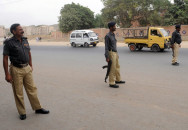
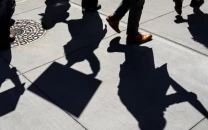

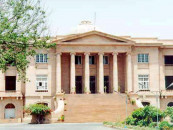
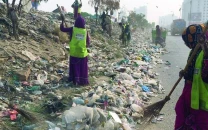












COMMENTS
Comments are moderated and generally will be posted if they are on-topic and not abusive.
For more information, please see our Comments FAQ